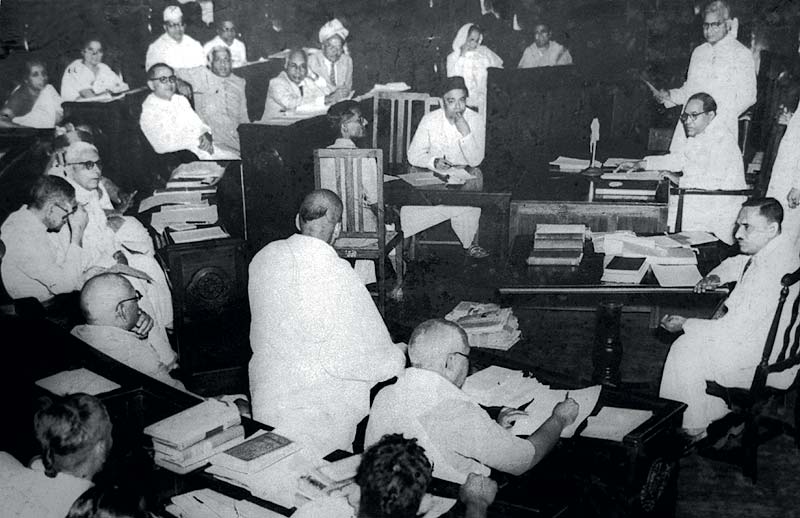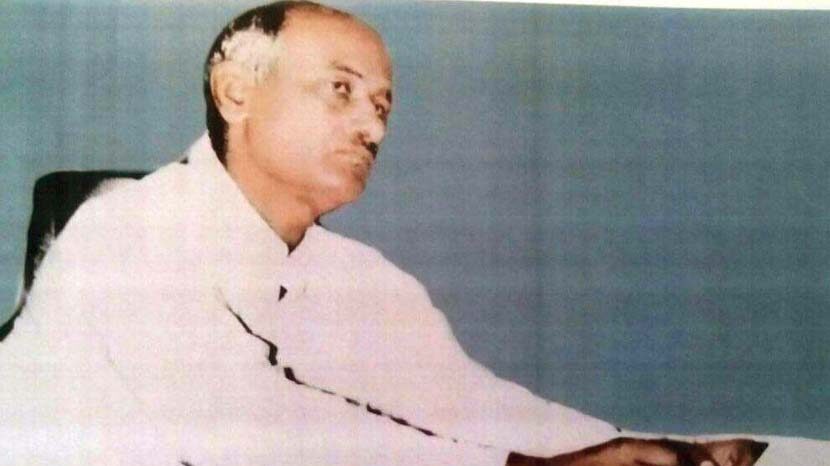One backward caste, numerically dominant in northern Tamil Nadu and well mobilized into caste organizations, comprises the Vanniyars – long associated with agriculture, but chiefly as tenants, and labourers, rather than as owners of land, at least until urbanization, which saw an exit of landlords to cities, which, in turn, gave tenants and sharecroppers access to land, though on a modest scale; there are some segments among this caste that took to weaving as well. More recently, they have moved into the professions, including government employment on account of the larger logic of economic transformation, and of course reservation provisions, though their presence in these occupations, is not commensurate with their share in the population. With large numbers still present and active in agriculture, they have also faced the brunt of the agricultural crisis, and in any case over the years, particularly in and around the Neyveli Lignite Power Plant, have steadily lost land. The Vanniyars are well organized and politically have been active in the Dravidian parties, as well as Congress, and to limited extent in the left Kisan Sabhas – their political leadership has concentrated on agitating for a fixed share of reservation for Vanniyars, who have been declared most backward, and on their representation in whichever political party is in power, at the state as well as central governments.

The next caste that we need to take note of comprises a bloc of communities, since known as the Mukkulathors, many of which are found in the southern districts of the state – a section of which is a de-notified community. Historically, these castes – Agamudaiyars, Kallars and Maravars – have lived on the fringes of agricultural society, and were given to policing and active militia work in the pre-modern period. They do not appear to have been identified with particular occupations, though in the eastern districts, there are agriculturalists amongst them, including powerful landlords. Many of them migrated to work on tea and rubber plantations in Sri Lanka and Malaya [present-day Malaysia and Singapore] in the late colonial period. Elsewhere, they have settled into agriculture, as in the central districts, bordering Kerala – as a result of being “pacified” by colonial authority and missionary activity. These communities came into their own in the 1950s – with the emergence of a powerful and charismatic local leader, who has since acquired the status of a revered ancestor, and is worshipped as such. They received a fillip through overt political support from the ruling AIADMK in the 1980s. On account of local circumstance, political patronage, and reservation they came to populate local administration, particularly revenue and police at the lower levels in the southern districts.
On the other hand, segments of the Mukkulathors were active in the left movement, particularly where they are agriculturalists, and in some left-led trade unions. They have been also present in large numbers in the Dravidian parties, Forward Bloc and Congress.
The third community that has proved influential comprises the Gounders, also known as Kongu Vellalas. Noted for their unrelenting labour, and often on rain-less lands in western Tamil Nadu, the Gounders are essentially peasants, whose skill earned the admiration of colonial administrators. Due to the economic changes that took place in this region, sections of the community have moved on – from being peasants to successful entrepreneurs in the textile and related industries, including in the export sector, associated with the hosiery industry in the boomtown of Thiruppur. Kinship and caste ties have been central to capital mobilization by the Gounders, and while class differences persist, the caste as a whole is viewed as successful and upwardly mobile. Politically, the elites among them were associated with the nationalist Congress, though large numbers were part of the Dravidian and communist movements as well. Caste associations have become increasingly prominent in the region, and their shrill politics of identity, coupled with demands for higher reservation, have rendered them attractive to small town and rural ideologues, often silently supported by economically powerful caste interests.
The fourth caste are the Nadars – who were consigned to near-untouchable status in the 19th century and have since been one of the most mobile of communities in the Tamil context, with sections of them having become dynamic entrepreneurs, educationists, not only in the Tamil context, but in the all-India context as well. Nadars are not locked into status battles with Dalits, but have been with other backward castes in the past – though they are as watchful of endogamy limits as the others. Some segments of the community have been drawn to Hindutva ideologies, and while to an extent this has to do with trade rivalries with Muslims, that is not of course the only reason. This is ironical, given that in the heyday of the Self-Respect Movement, they were among the staunchest of Periyar’s followers. Their anomalous position in the caste order has not “required” them to practise untouchability, so to speak, but the desire to upgrade oneself within the social order implicates the self and community into observing varnadharma – and in the case of the Nadars, that some have chosen to abide by Hindutva is indicative of the intermeshed secular-religious framework of the caste order.
Of these castes, Vanniyars, Mukkulathors and Gounders have been in the forefront of attacks against Dalits – though smaller sat-Shudra and the so-called most backward castes that are locally dominant have also been resolute in refusing to concede equal rights to temple honours for Dalits, and have been as inimical to marriages where one of the spouses happens to be Dalits.
Attacks against Dalits emerge from a position of social anxiety and of feeling threatened by educated Dalits, upwardly mobile Dalits – by their resolute refusal to heed caste hierarchies. Such anxiety is expressed in and through acts of crude violence, and often endorsed by caste outfits and political parties – for reasons that are contingent on the one hand, and have to do with the logic of the caste order on the other.
The question that of course arises, and has been most sharply posed by Dalit leaders and parties, is how one may reconcile these emergent caste interests, often expressed in charged language, and defined by their clearly spelt-out antagonism towards Dalits, with the fact that this is a state that witnessed a powerful anti-caste movement and one that came to political office. Young Dalit intellectuals are wont to argue that the hypervisibility of these castes in political and economic life, and the social authority they continue to deploy against Dalits, points to the limited success of the Dravidian movement – that it was more successful in articulating an anti-Brahmin politics, rather than an anti-caste politics, and perhaps neither the movement, nor its chief arbiter, Periyar were as invested in the latter.
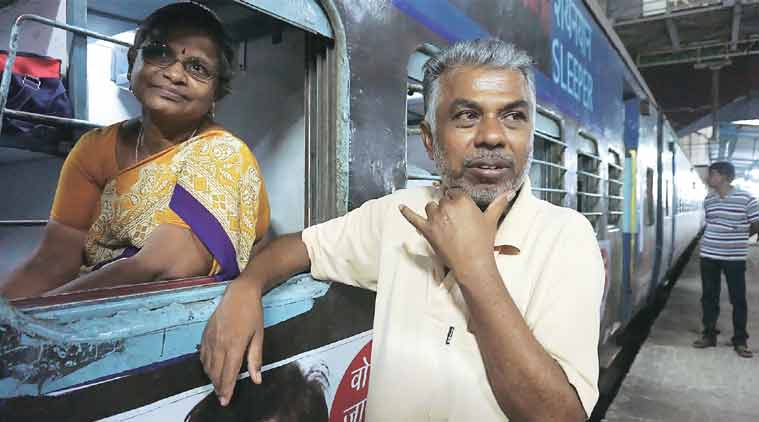
This is not a question that can be easily settled in the Tamil context. But, in spite of more than 50 years of non-Brahmin governance, violence against Dalits and resentment at their mobility and success, such as has been possible, persist. This is something that has to be taken seriously and to do this, we ought to reflect on the past, as well as on how that past is invoked to explain, justify or argue present-day concerns.
Incidentally, in Tamil Nadu there are as many Dalit intellectuals who find ideological and inspirational arsenal in Periyar for their anti-caste struggles (these are the ones who are not bilingual and hence are unable to reach out to an all-India audience) as those who, for their own reasons and logic, tend to dismiss him as irrelevant to Dalit cause.
Committed to annihilation of caste
We would like to start by noting that we don’t think there is either historical accuracy or conceptual weight to the argument that Periyar was not committed to the annihilation of caste. Nor is it fair to claim that he was concerned only about non-Brahmin claims to equality with Brahmins. If one were to examine his long political life and the manner in which he – and the organizations he founded, and the ideologues, publicists and people who were part of these – expressed their anti-caste politics, one could see that there were differences in emphases and arguments over time.
During 1925-1931, Periyar and his Self-Respect Movement espoused a radical atheism, and strong commitment to ending untouchability; to the cause of civil rights, of Dalits, to access public spaces, including temples. They offered a principled, charged and satiric critique of what they termed political Brahmanism – which was their definition of Congress nationalism. They were equally critical of Brahmanical Hinduism, of Hindu scripture, lore, and ritual and so on. They held strong views on the women’s question, and argued through a politics of female freedom and autonomy – which insisted on women being arbiters of their own sexual and conjugal choices, and as free, as men, to commit themselves to public life and the public good, through the pursuit of reason, equality and justice.
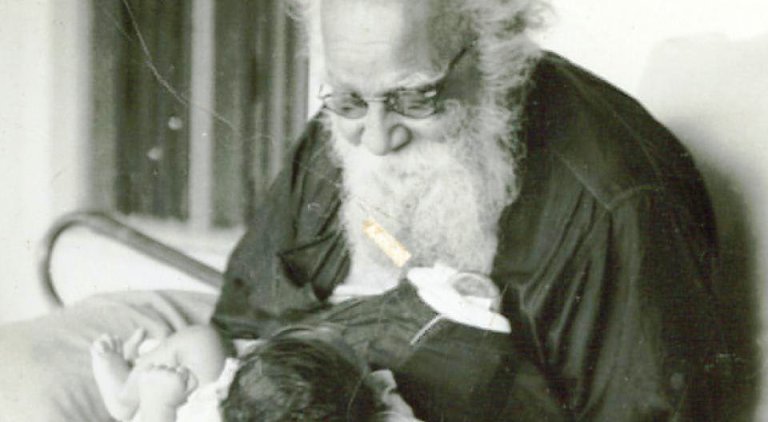
From 1932 to 1937, especially until 1935 – following his visit to the Soviet Union in 1931-32 – Periyar’s critique of caste was bound with a critique of its material and economic basis. During this first decade of the Self-Respect Movement, we find Periyar addressing non-Brahmin Shudra and sat-Shudra castes, Dalits, women and men of property and learning as well as the very poor. Dalit groups, caste associations, non-Brahmin civil groups were in touch with the Self-Respect movement, and Periyar and others spoke in all these forums – and one of the most important indices of Periyar’s recognition of the centrality of Dalit claims on equality and justice is the unconditional endorsement that he and others in the Self-Respect Movement extended to Babasaheb Ambedkar’s position on the communal award, and they were as fiercely critical of Gandhi as Ambedkar would be, in the future.
What we ought not to forget though is that Periyar was neither singular nor the first to address the Dalit question in Tamil Nadu, or in the old Madras. Dalit organizations, linked to newspapers, church groups, and to a politics of assertion and rights, had been active in the province from as far back as the last quarter, if not earlier, of the 19th century, as is evident from the phenomenal life and work of Pandit Iyothee Thass. Further research undertaken by young Dalit scholars such as Mathivannan, Stalin Rajangam, Ko. Raghupathy, and Balasubramaniam has brought to our attention the existence of complex histories of Dalit organizing across the state, which does not fit in all that easily into familiar political locations, whether to do with Congress, the Dravidian movement or the left movements. So, in a sense, Periyar spoke to a political constituency that was already politicized – and to be sure, he brought in startling new themes to do with radical republicanism and women’s equality, but his critique of Brahmins, and Hinduism were not unfamiliar themes in Dalit political circles and in fact had existed from the late 1890s.
To summarize, this first decade of anti-caste politics witnessed a call to annihilate caste – in and through a denunciation of what Periyar called Brahmanical Hinduism and temple worship, and through the practice of a politics of self-respecting comradeship, which was founded on rationalism, and a radical politics of social and gender equality. A radical sense of self, founded on self-respect, was also seen as essential to lead a life, free of caste.
During 1938-1947, from the time when the Self-Respect Movement spearheaded a struggle against the imposition of Hindi as a language of instruction in the Tamil context, the critique of political Brahmanism acquired salience – as Periyar and his followers read this move to impose Hindi as representing the political and cultural will of the nationalist Brahmin-Bania combine, a will that they argued rendered Indian nationalism narrow in its focus, and committed to the hegemony of the upper castes. This decade thus saw a critique of caste aligned to a critique of nationalism – and as India stood on the brink of independence, this double-edged critique expressed itself in and through a language of Dravidian nationalism. This is the most complex part of our story, because it proved consequential: for one, it advanced a critique of the Indian nation-state which proved complex and subtle, which expressed the right of self-determination of the Dravidian nation, arguing that it was, in essence, a caste-free utopia. However, the critique of caste that was implicit in this politics did not possess the acute social edge that it did in the former decades.
During the next important historical period, 1948-1952, we see Periyar fulminating against Hindu-Hindi-Hindustan in very radical ways and draw closer to the left. However, post 1952, following the first general elections, and almost until 1967, he essayed a pragmatic turn, and gradually looked to the non-Brahmin Congress leader K. Kamaraj (who was chief minister of Tamil Nadu from 1954-1963) and his government in Tamil Nadu to fulfil his dreams of social justice – which had to do with reservation, the presence of non-Brahmins in political office, and with pursuing modern, institutional and industrial growth. Critiques of caste were now expressed in and through a Periyar’s endorsement of K. Kamaraj’s policies to do with affirmative action, and his commitment to a modern social and economic order.
Further, during this period, especially in the early 1950s, we see Periyar conceding that Dalits are better served by Dr Ambedkar, his ideas, and organizations, and in this context, it would appear to those who wish to misread him, that he presented himself as a leader of the Shudras, and not of a putative anti-caste constituency.
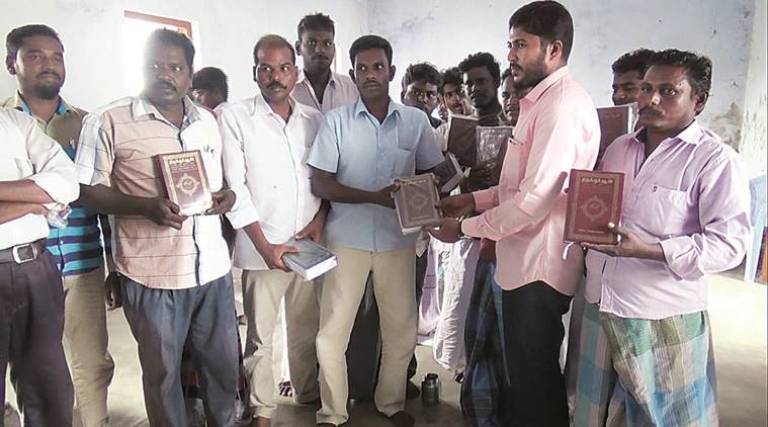
Given this complex political history, how do we assess the legacy that he handed on? On the one hand, the Dravidian movement has achieved limited success drawing on his radical legacy, with respect to reservation, and a populist welfarism. Dynamic and built into policymaking during Kamaraj’s time, this welfarism has since turned fierce (especially under the All India Anna Dravida Munnetra Kazhagam (AIADMK). This has also resulted in a situation where the Dravidian movement’s ideologues and leaders, of whatever political dispensation, have come to be identified with the “oppressed”. On the other hand, this has meant that the graded logic of the caste order, the material basis of caste power and the cultural weight of caste when it comes to marriage have been matters relegated to the background by Dravidian political parties even as particular caste constituencies have been cultivated in the context of electoral politics.
Now if we are to put together the story of Periyar’s political journey and the historical changes that have beset the lives and fortunes of major castes in the Tamil context, we see a pattern emerging – Periyar’s anti-Indian State politics, his anti-Brahmanism and opposition to an imperfect federal polity did not translate into a locally effective ideology or plan to annihilate caste, though it possessed all the necessary ideological instruments to do so. To be sure, his Dravidar Kazhagam (DK) that he founded (in 1944) was very effective in particular contexts, addressing specific instances of casteist violence, and in taking the part of Dalits during such conflicts, and in encouraging and supporting trans-caste marriages; but DK did not develop a specific programme that dovetailed various activities into a concerted plan. Meanwhile, the logic of development and of electoral politics (as we have briefly described in our account of the four dominant backward and most backward castes in Tamil Nadu) infused fresh life into older – and local – hierarchies of caste even as Dalits sought to challenge the same. And the end result has been hatred, anger and violence against Dalits.
To return to the question of the so-called backward and most backward castes, in this context, those members of these castes, who went with the ideologues and activists of the Dravidar Kazhagam in the post-Independence period, in a public, political sense, agitated against Brahmin power and sometimes against the caste order; at the same time, in their own locations, they remained particular castes, defined by their region, occupation, and relationship to Hinduism. And their relationship to Dalits was acutely shaped by both factors – in some cases, positively by experiences of comradeship at least in the public realm and in other cases, negatively by local caste considerations, especially of status, precedence, and competition for public goods. For example, if we were to take the Vanniyars we would find that they viewed Dalits as fellow comrades in public campaigns against the Indian state, or for the cause of the Tamil language, and in the context of limited class struggles. However, and more often than not, they would be equally given to viewing them in a spirit of competitive envy. Further on their own too, they had specific demands, for instance, to do with reservation, and in these and other contexts, where they upstaged their “backwardness”, such assertion, even when “just” in the context of graded inequality, was always shadowed by acts of violence against Dalits.
With the Mukkulathors, we find a different logic at work: challenged by Dalits from fairly early on, from the 1950s, if not earlier, they have sought to “punish” Dalit assertion and independence, especially Dalit insistence on marking their own political space, through building statues of Dr Ambedkar, or other local Dalit leaders (such as the revered and much loved Immanuel Sekaran, who was cold-bloodedly murdered by a group of Mukkulathors).
With Gounders, we see yet another practice of dominance. Here, the late Dr Balagopal’s analysis of what he calls the provincial propertied classes comes in useful. He argues that in Andhra Pradesh, these classes, comprising economically powerful and socially dominant upper non-Brahmin peasant communities, such as the Reddys and Naidus, sought to assert political clout and power in a regional context, and against the national Congress. For them, the practice of punitive violence against Dalits becomes a requirement, an assertive act of violence to mark their own recently acquired political authority. While the Gounders are not necessarily opposed to the Congress, they are a powerful peasant caste that has come into industrial wealth and growth, and they underscore their social dominance through acts of humiliation and violence directed at Dalits.
Let us summarise: in the Tamil Nadu situation, some things are clear – from the early 20th century, non-Brahmins and Dalits resented Brahmin authority and came together for various purposes. Theirs was not a class unity or a comradeship based on ideological consensus about the caste system. Rather, it was defined by anger at Brahmin power and venality, and opportune politics; to be sure, critiques of varnadharma urged forth by Periyar and his self-respecters and later by the Dravidar Kazhagam were heard out, perhaps even internalized and accepted by some, as was the critique of faith, particularly Hinduism (certainly by Dalits, more than others). There have been dramatic and particular campaigns against casteist authority, and centred on particular demands especially in the early period, from the 1920s to the late 1940s – and yet it must be said that while ideologically, the annihilation of caste was centred on a critique of Brahmanical Hinduism, and the caste order it sanctioned, such critique did not always express itself through a singular programme for the annihilation of caste. At times, the emphasis was on the abolition of untouchability, at other times on economic equality; at times on angry denunciation of unregenerate non-Brahmin caste pride and arrogance, and sometimes the emphasis was on female freedom and self-respect. From the 1940s onwards, the destruction of caste was linked to exiting from an unjust federal polity, and challenging the “Brahmin-Bania” Aryan state, and in imagining a caste-free “Dravida Nadu” or Dravidian nation. However, when the anti-caste agenda came to be thus nested within a larger politics of resistant nationalism, and when Periyar’s anger was trained against the unitary Indian state, the internal tensions, contradictions and cleavages that marked the larger “Dravidian” community, particularly between Dalits and other castes failed to receive as much critical attention. Meanwhile, the socio-economic changes that transformed Dalit as well as other caste lives came to be mediated through an unregenerate politics of caste pride and violence.
Mountain of caste
Periyar was not sanguine about his life’s work. When interviewed for All India Radio a few months before he passed away, he said that his life’s work had not amounted to more than attempting to haul and overturn the mountain of caste, using a single lock of hair. He had attempted what appeared just and right, but that did not mean that justice had been secured – the struggle was difficult, long, wearisome and arduous.
Before we conclude, we would like to add a few words on the left: the communists had an agenda for the material expropriation of the dominant class-caste nexus, but they did not have a programme that would take into account and work against the logic of graded inequality, against the fact, so astutely noted by Dr Ambedkar, that caste was not just a division of labour, but of labourers. To be sure, in particular contexts and struggles, there was great and affectionate comradeship, but the question that remains is whether that translated into sustained new social and fraternal values, into that associational life that Dr Ambedkar valued, or that self-respecting samadharmic existence that Periyar upheld in the face of Manudharma. The left worked with constituents of the Dravidar Kazhagam, especially in the 1940s and early 1950s, and did endorse struggles against caste-based inequality and violence, and enrolled Dalits in large numbers in its agricultural workers’ organizations, its trade unions in the plantations and in those that emerged in the leather trade and with respect to sanitary labour. But even here there were autonomous Dalit organisations, including trade unions, and the record of them and the left working together has not been very good though not absent. But clearly the onus was on the better-organized and resourceful left groups to have learnt from Dalit groups the salience of the caste question and responded to it with the sustained attention it deserves. Sadly, instead of doing this, the parliamentary left has sought to retain its meagre presence in the legislature through opportunist alliances with one or the other of the Dravidian parties.
Things have changed to an extent over the past decade, and the recent assembly elections saw the left and Dalit groups coming together in what was clearly more than a strategic alliance – and in many contexts the CPM’s Anti-Untouchability front and the Dalit party Viduthalai Siruthaigal Kachi (VCK) work together.
Forward Press also publishes books on Bahujan issues. Forward Press Books sheds light on the widespread problems as well as the finer aspects of the Bahujan (Dalit, OBC, Adivasi, Nomadic, Pasmanda) community’s literature, culture, society and culture. Contact us for a list of FP Books’ titles and to order. Mobile: +919968527911, Email: info@forwardmagazine.in)

